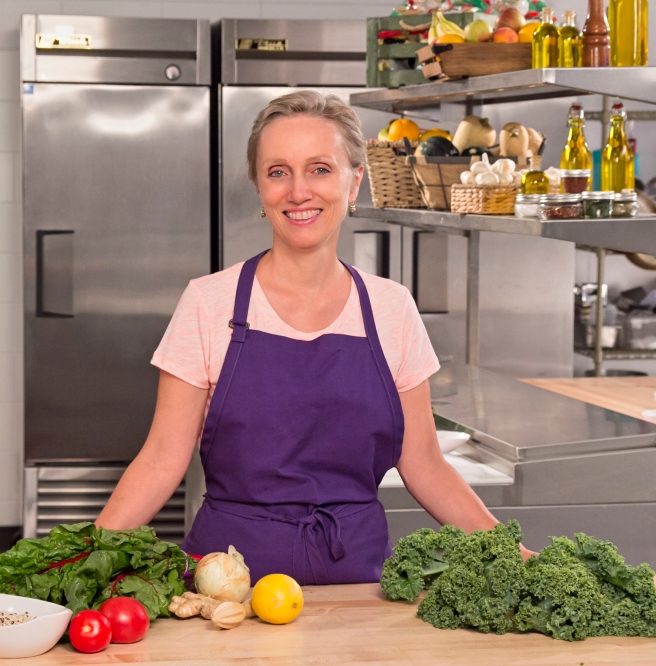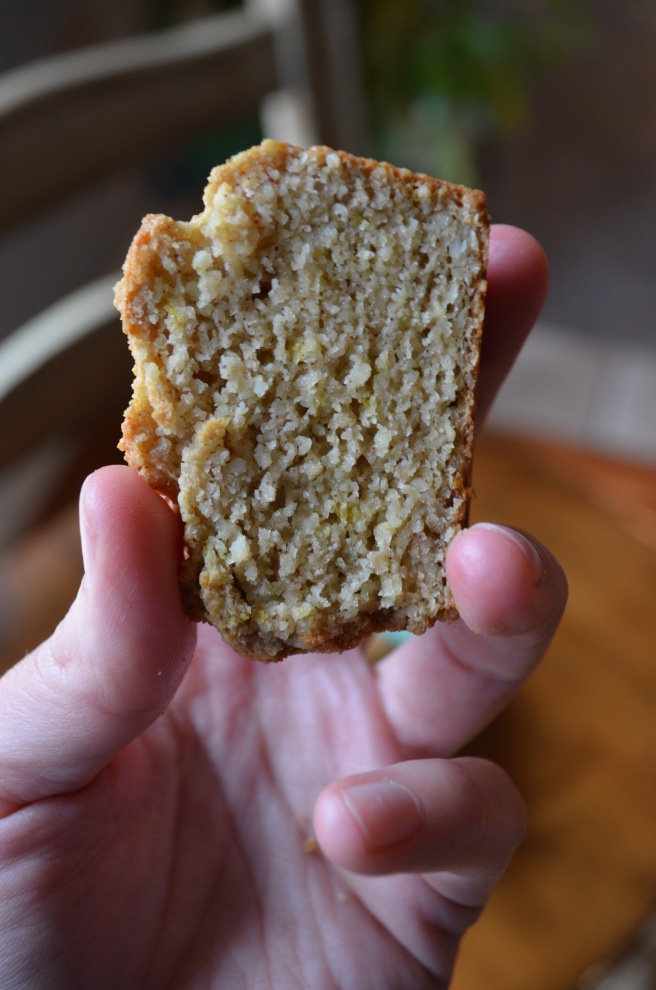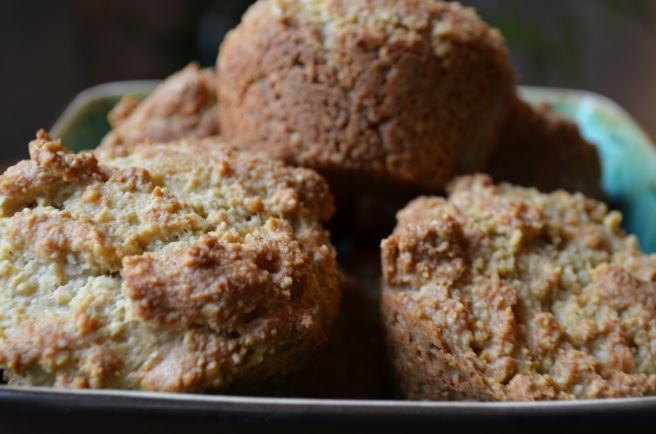A Welcome From Dor
 The way I feel about superb chefs is similar to how I feel about scientists: I’m filled with admiration because they know things I don’t know. That makes them mysterious and wonderful, as long as they are benign.
The way I feel about superb chefs is similar to how I feel about scientists: I’m filled with admiration because they know things I don’t know. That makes them mysterious and wonderful, as long as they are benign.
I am a superb chef at heart, but not in fact. I’m a scientist at heart, but not in brain.
What my chef friend Marcia gave me was permission to stop adding ingredients, to stop being seduced by the lure of the complicated, and to allow the explosion of the true flavor of vegetables to blossom on my tongue. Honestly, it all started with a lowly beet. Raw…
Marcia’s Story: That Beet Slaw
 You know how, when you learn something new, the whole world seems to be about that one thing? Well, for me, the world is all about that beet slaw.
You know how, when you learn something new, the whole world seems to be about that one thing? Well, for me, the world is all about that beet slaw.
I am a private cooking instructor. People come to my house and pay top dollar to cook a sumptuous dinner together, then sit down for a dinner party. They pay for new recipes and the chance to cook together, something pretty rare in our world today. Often, the menus include whole foods – fresh vegetables and fruits, whole grains perhaps, animal protein and fats, olive and nut oils. Unfortunately, I’ve also been bathing in heavy cream and wading through butter and sugar, teaching folks how to prepare what I call “entertainment food.” It’s elegant fare, and I’m proud of what I’ve created. But a dinner party for them has become a lifestyle for me, and it’s impossible for me to make a steady diet of these things and feel well.
It’s easy to fall in love with the Suppers ideas.
So I decided to try Suppers. At my first meeting, a mother with two young children said, “It was worth coming to this program for that one beet slaw recipe. My kids eat huge servings of raw beets whenever I make that slaw.”
I was skeptical. It is easy to fall in love with a food when you love the ideas around it. And it is easy to fall in love with the Suppers ideas. Fill your plate with the good stuff and ease out the bad, cook and eat with purpose in a communal setting, listen to your body…But that won’t cut it with my students, or with my family for that matter.
How can I get more of this, and how soon?
At the next Suppers meeting, we made Sonja’s beet slaw again, this time with a mixture of sunny disks of golden beets and fine shreds of the blood red (owing to me experimenting with the blades on the food processor). A simple white balsamic vinaigrette and that was it. People just inhaled it.
At home I shredded up the deeply colored beets with over-wintered parsnips and raw sweet potatoes! I added the first of this year’s lovage and sorrel, then sprinkled toasted pumpkin seeds on top. I made a simple vinaigrette from olive oil and my special wine vinegar.
My husband couldn’t stop eating it. That’s not the amazing part. The amazing part is that my college-age son went nuts for it too. I’d given him some leftover salad in a jar one day in the car as we was heading for his dorm. A few days later, he returned with some of his college friends in tow, and these were his exact words: “How can I get more of this, and how soon?”
I packed him off to the grocery store to buy the beets.
I realized that what the Suppers philosophy has going for it is the fundamental culinary principle of taste. If your body is starving for certain nutrients, it goes into orbit when you feed it those foods. The Suppers Programs operates on the principle that we as a culture have deprived ourselves of the pleasure, nutrients, and community that give a meal its soul. Suppers is about reincorporating that good stuff into our lives in an intentional and joyful way. And the entertainment food? Eventually, it just won’t fit on the plate.
Meals with Marcia, By Allie
 I should start by saying…I only eat beets because I know they’re good for me. Vegetables are great and everything, I’d go so far as to say they’re 90% fabulous but then there’s that 10% and beets have always made that list for me. Meaning they’re not my favorite or even my preference.
I should start by saying…I only eat beets because I know they’re good for me. Vegetables are great and everything, I’d go so far as to say they’re 90% fabulous but then there’s that 10% and beets have always made that list for me. Meaning they’re not my favorite or even my preference.
But sometimes, when prepared in delicious, fabulous ways, beets glide effortlessly into that 90%. Beets become sensational. This is one of those times.
The next delightful fact is that when it comes to delicious preparations of vegetables, the two women I trust the absolute mostest, you know, besides myself, are Dorothy Mullen and Marcia Willsie. These ladies know how things are done when it comes to flavor. And now you will too!
Flavor Savers
OK so if you’re going to be making this salad…or any salad really…there are some things you should know.
- Pretty much no matter what happens, use seasonal produce whenever you can. Everything tastes better AND offers more nutrition when it is eaten in it’s season.
- Beets have two vibrant seasons: Spring and Fall. Technically beets can grow as long as the sun is shining and the ground isn’t frozen solid. However just because something is growing does not mean it’s the optimal season. Just look at California: they grow tomatoes in the Springtime and yet they are nothing compared to a Jersey tomato picked in August.
Pathetic in comparison. Really just sad.
- Beets have two vibrant seasons: Spring and Fall. Technically beets can grow as long as the sun is shining and the ground isn’t frozen solid. However just because something is growing does not mean it’s the optimal season. Just look at California: they grow tomatoes in the Springtime and yet they are nothing compared to a Jersey tomato picked in August.
- Remember lessons from flavor balance class:
- Salt balances Acid
- Bitter balances Sweet
- Fat carries flavor over the tongue and adds richness
- (Don’t worry about Umami for raw preparations, we’ll talk of that another time)
- Salads are about texture as much as they are about flavor. If you are making a spinach salad, make sure to add something that goes CRUNCH! If you are making a beet slaw, make sure to add something that doesn’t require so much chewing. Like chiffonade collard greens lightly massaged, or Feta cheese. Or both.
Sidenote – did you guys know that there’s like a BUNCH of different varieties of beets? I only learned this when I started working on farms but red beets are not the only players in this ball game. Far from it! There are golden beets, of course, but there are also White Beets – the sweetest beet – and Chioggia Beets – these are pink and white inside they look sooooooooo pretty in slices!!!! Farmer David makes fun of me because I can’t say “Chioggia” without really trying and making it sound very dramatic but neither can any of our customers so who cares. In an unrelated story, I’m smarter than him.
The point is, don’t feel limited by your product. Feel inspired by it, feel invigorated by your growing knowledge of different products and how to use them. And always feel humbled by where we get to live and how much we get to see and use. Also, allow yourself to feel like you don’t know the best thing to do and let that lead you to look for answers instead of quit the process. If you’re using seasonal produce in the first place, you can’t make that many wrong turns. If you’re just learning about what’s in season when, well darlin – get your tush down to the farmer’s market and talk to a farmer.
There’s actually a book that I would recommend to anyone – particularly someone who isn’t as experienced at finding foods to pair with other foods – called The Flavor Bible. It’s FABULOUS, you guys. Whenever I’m stumped in the kitchen I know that I can turn to that book and find something to go with the ingredient causing confusion. Here’s a passionate excerpt:
“We taste with our hearts as much as with our tongues. What else could explain adult preferences for one’s mother’s dishes over those prepared by a great chef? This also helps to explain the lasting appeal of traditional dishes and cuisines of countries around the globe, which stem from our love for their cultures, their people, and the deeply rooted culinary traditions that have sustained them over centuries.” – Page, Dorneburg.
I mean doesn’t that just make your heart SING?! What Marcia was talking about – the best part of making That Beet Slaw – in having her son come home asking for more. That moment of literal joy experienced by her son Tucker when he tasted Mom’s beet slaw and by Marcia in knowing that she made her son crave something healthy she made. That is what we all are looking for. It’s indescribable when you aren’t in the throes of the experience but it has to do with finding the perfect combination of flavor, texture, love, and timing, when it comes to making food for the people we love, that they love.
Make sure that you put love into the food you are making. Your family can taste it with their hearts.
Step One: Look at how brilliantly beautiful beets are as you slice them up to pieces small enough to fit into your food processor hole thing.
For organic beets, I don’t peel mine. Especially not if I’m shredding the beets up. I just scrub em real good with my fingers or a veggie brush and slice off the tops and that’s pretty much it. You can peel them if you want to and I would definitely peel conventional beets before shredding.

Step Two: Using the shredding blade of your food processor, shred the beets up. If you don’t have a food processor, call me, you can borrow mine. Normally I would be like “eh, you can do it with a box grater” but no. Not for this.

Step Three: Make your dressing! Marcia uses super interesting and elegant vinegars but the only thing that matters for this recipe is that you don’t use balsamic vinegar. That’s basically the only rule. You can use white balsamic, just not brown. It’ll make the salad look yucky. And things that look yucky are tasted suspiciously.

Step Four: Top with other stuff that you have prepared and serve! That’s really it. You’re done. No, step away from the cutting board. It’s just that easy.
I used some finely chiffonade collard greens and some chunks of feta that I crumbled with my hands. You can use anything you want!

Sonja’s Beet Slaw, Marcia Style
2 bunches (about 6 small) organic golden and red beets, scrubbed real good and sliced (I know it’s supposed to be “scrubbed well” I’m just being literary. OK Mom?)
3 Tablespoons champagne vinegar (or white balsamic, or white Pinot, or anything white except Distilled White Vinegar. That’s for cleaning and pickles.)
1/4 cup olive oil
sea salt and white pepper
lemon juice if necessary
Topping Suggestions
Dairy: Crumbled Feta or Goat Cheese
Greenery: Chiffonade kale, collards, spinach, or basil
Nuts: Crumbled walnuts, sliced almonds, toasted cashew nuts
Crunchy Vegetables: Shredded cabbage, carrot, scallion, red onion
Animal Protein: Grilled chicken, Blackened salmon, Grilled shrimp, Seared Ahi Tuna
- In a food processor set with a shredding blade, shred all beets. Place into a bowl and, using a set of tongs, toss with vinegar, oil, salt, and pepper. Beets should be gleaming and their color brighten with the oil. Taste for balance. Add salt and more acid if necessary. I sometimes add a squeeze of lemon juice if the acid is too sweet and not sharp enough. Lemon juice usually does the trick. Lime would work here as well.
- Top with ingredients of choice and serve.
Suppers is a brain-based recovery program for preventing and reversing health problems with food. If you want to submit a story about how you achieved your goals by focusing on a diet of whole foods, please send in a story to Dor!
If you would like to join our mailing list, please head over to our website to sign up and fill out a questionnaire – that will let us know what interests you in health and/or cooking! To become a subscriber of The Purple Apron, email Allie and she’ll put you on the list!
As always, head to our website for recipes, tips, stories, meeting schedules, registration for workshops, and more! The Suppers Programs is dedicated to helping YOU make your own personal transition towards a healthier life. Join us and discover your path towards vibrant health, seated next to a caring Suppers member, enjoying a divine meal together!
Suppers social resources:
Suppers Website
Facebook Page
Instagram handle @suppersprograms


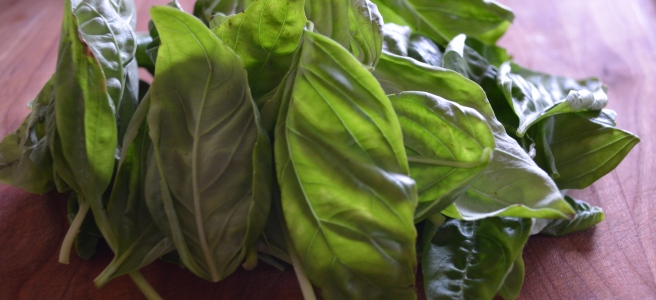
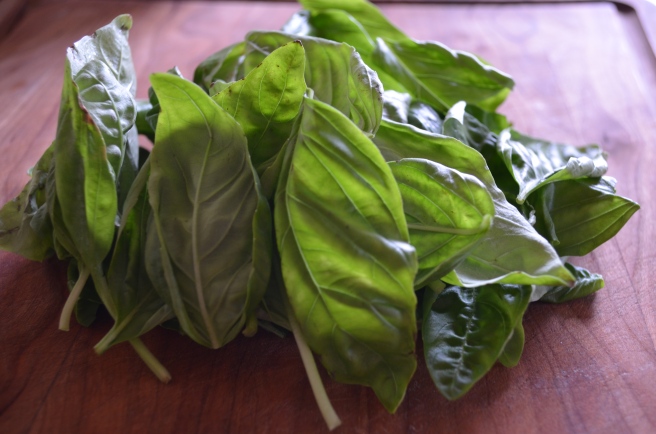
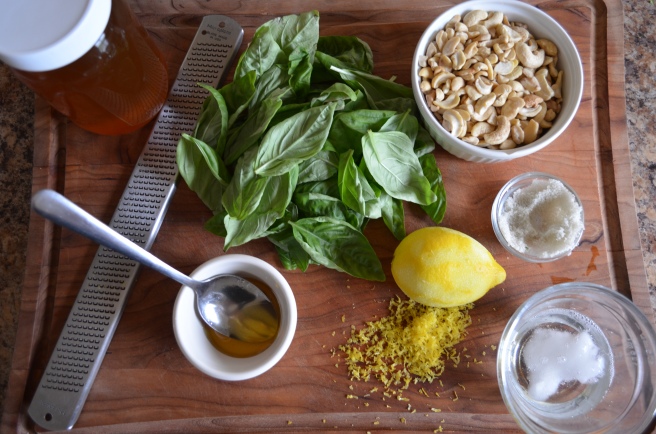
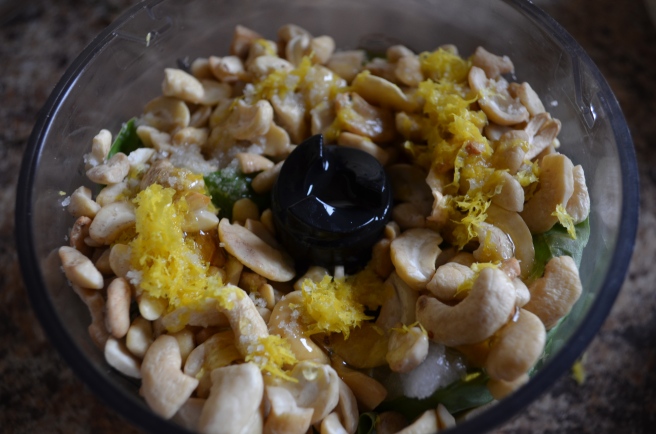
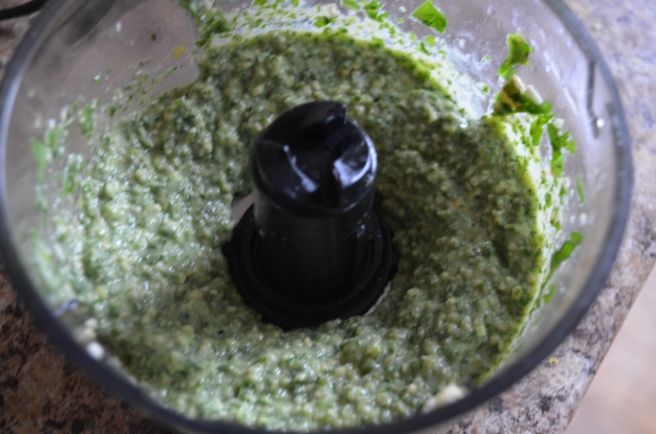







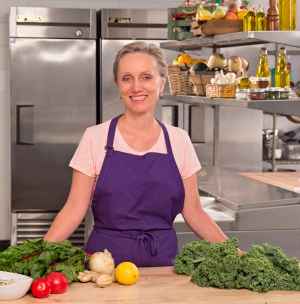 You are the parent, you are not the friend. In this week’s story, Blueberries for Georgia, another frustrated mother deals with her five year old’s resistance to eating fresh fruit. Blueberries were new for Georgia.
You are the parent, you are not the friend. In this week’s story, Blueberries for Georgia, another frustrated mother deals with her five year old’s resistance to eating fresh fruit. Blueberries were new for Georgia.



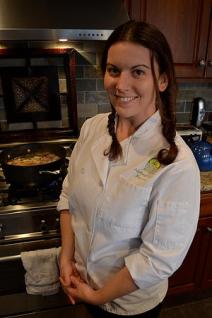 The other week I did a cooking demonstration for a trained Suppers facilitator who was holding an outdoor family yoga class. There was a young girl there whose focus was pretty difficult to maintain through a couple of the activities I witnessed. Since the demo was outdoors I decided to make a salad – Quinoa Tabbouleh – with fresh tomatoes, scallions, parsley, lemon, oil, and salt. First thing this kid says:
The other week I did a cooking demonstration for a trained Suppers facilitator who was holding an outdoor family yoga class. There was a young girl there whose focus was pretty difficult to maintain through a couple of the activities I witnessed. Since the demo was outdoors I decided to make a salad – Quinoa Tabbouleh – with fresh tomatoes, scallions, parsley, lemon, oil, and salt. First thing this kid says:


 You do not need that much sugar. Stop it.
You do not need that much sugar. Stop it.

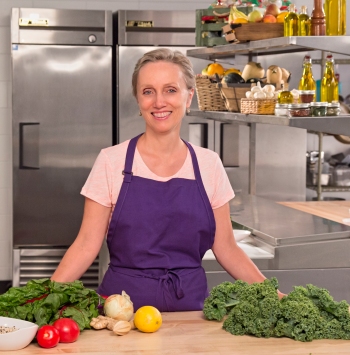 I can argue for a role for food in just about any scenario: health, illness, mental illness, failed or successful marriages, armies that march on their stomachs, and the rise and fall of civilizations. But even I know it’s not just about the food. Our relationship with food and ability to digest it and turn it into who we are require time and honor. You don’t have to be experienced at meditation to call more mindfulness into the way you eat. You can select eating according to your intentions instead of your impulses. Even just two minutes dedicated to mindful eating can shift how you relate to food.
I can argue for a role for food in just about any scenario: health, illness, mental illness, failed or successful marriages, armies that march on their stomachs, and the rise and fall of civilizations. But even I know it’s not just about the food. Our relationship with food and ability to digest it and turn it into who we are require time and honor. You don’t have to be experienced at meditation to call more mindfulness into the way you eat. You can select eating according to your intentions instead of your impulses. Even just two minutes dedicated to mindful eating can shift how you relate to food.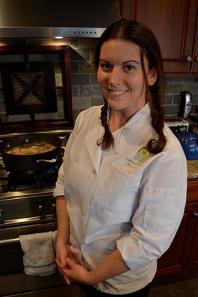 There’s this weird thing that only exists in America and, unlike a lot lot lot of weird things that only exist in America — this one may not be so desperately unhealthy.
There’s this weird thing that only exists in America and, unlike a lot lot lot of weird things that only exist in America — this one may not be so desperately unhealthy.




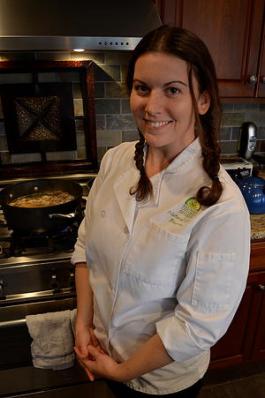 Sometimes I go to diners for breakfast (very rarely) and I see their French Toast or Pancake special for the day and they are topped with maple syrup, bacon, sea salt caramel, toffee, whipped cream, banana foam, strawberry sugar, and more bacon. And I’m like, “man, that sounds delicious! I’ll have eggs!”
Sometimes I go to diners for breakfast (very rarely) and I see their French Toast or Pancake special for the day and they are topped with maple syrup, bacon, sea salt caramel, toffee, whipped cream, banana foam, strawberry sugar, and more bacon. And I’m like, “man, that sounds delicious! I’ll have eggs!”







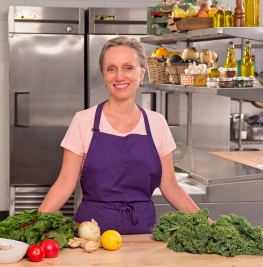 A Welcome By Dor
A Welcome By Dor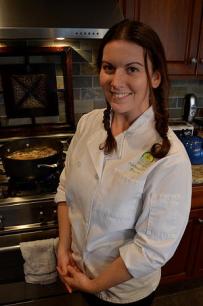 For thousands of years human beings have altered their environments to fit better into special lifestyles. How can we store foods better for the winter? How can we grow enough to feed larger communities? How can we move off this farm? How can we eat in a city? How can we speed up family dinner? How can we REALLY speed up family dinner? What’s family dinner? Dinner? That’s so 90’s.
For thousands of years human beings have altered their environments to fit better into special lifestyles. How can we store foods better for the winter? How can we grow enough to feed larger communities? How can we move off this farm? How can we eat in a city? How can we speed up family dinner? How can we REALLY speed up family dinner? What’s family dinner? Dinner? That’s so 90’s.
 pumpkin seeds. I flavor that up with sea salt, orange or lemon zest, cinnamon, alcohol free vanilla, cardamom, nutmeg, and/or allspice. Other options include oats, cooked millet, quinoa, or other grains.
pumpkin seeds. I flavor that up with sea salt, orange or lemon zest, cinnamon, alcohol free vanilla, cardamom, nutmeg, and/or allspice. Other options include oats, cooked millet, quinoa, or other grains.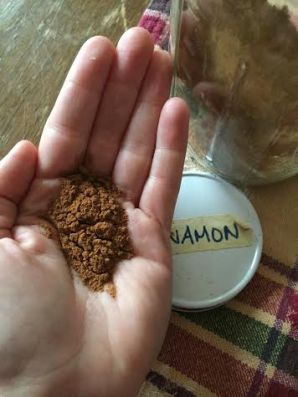 lla.
lla.
